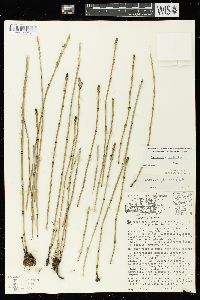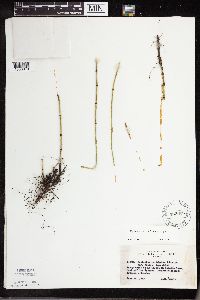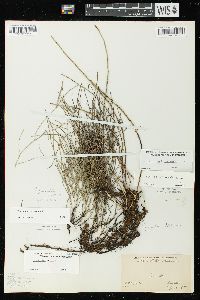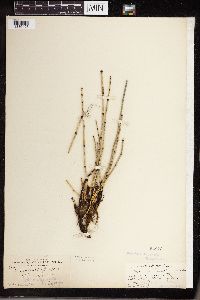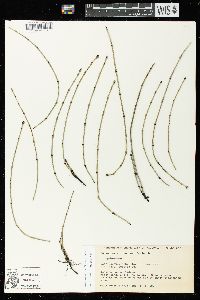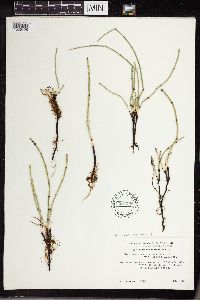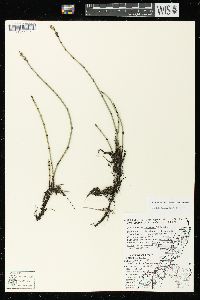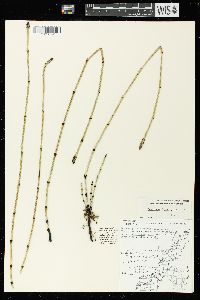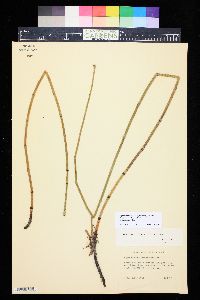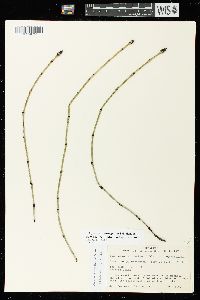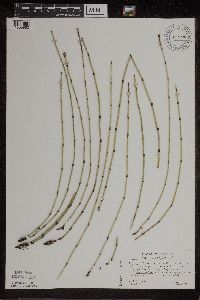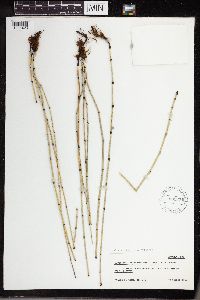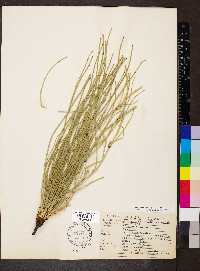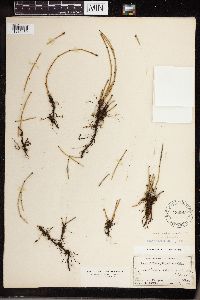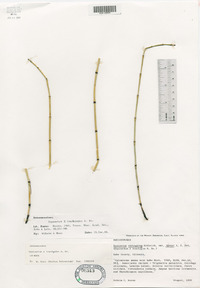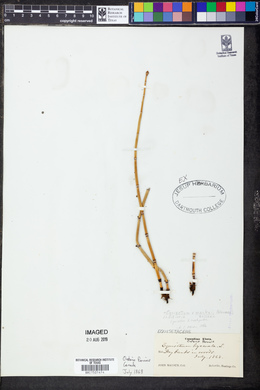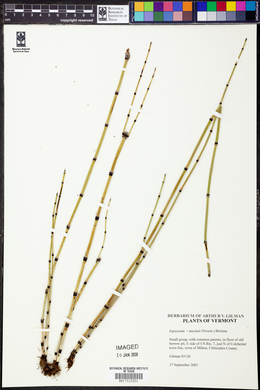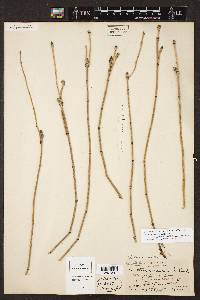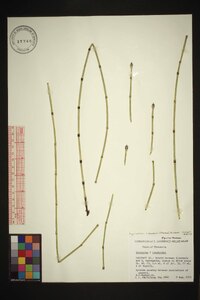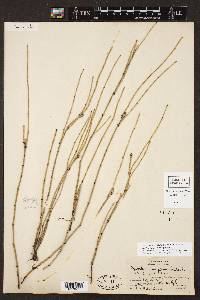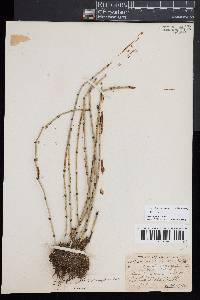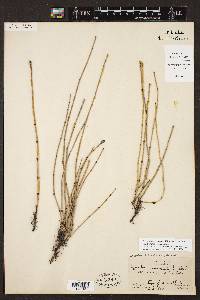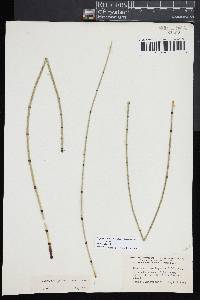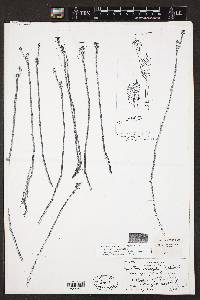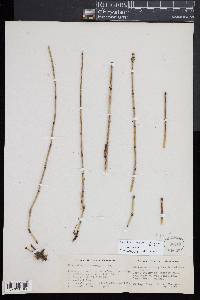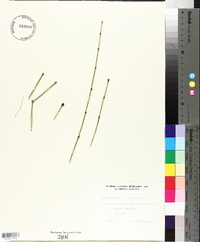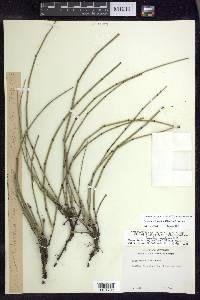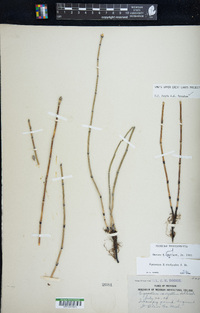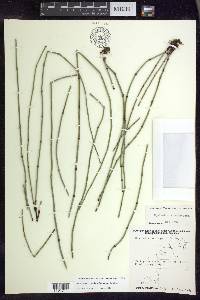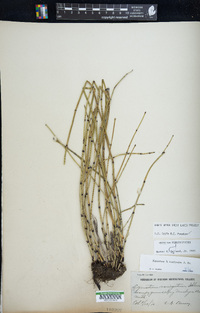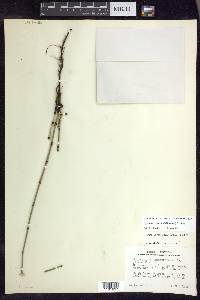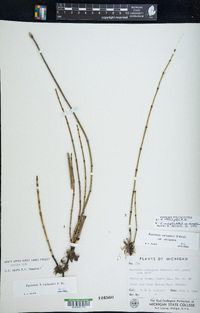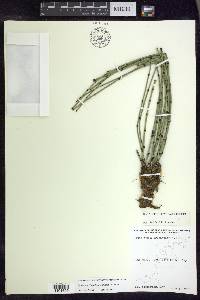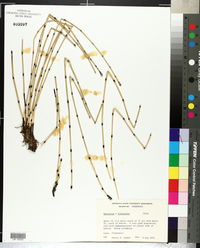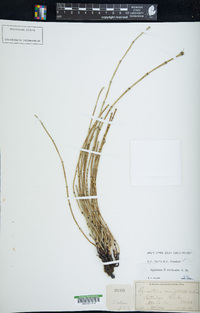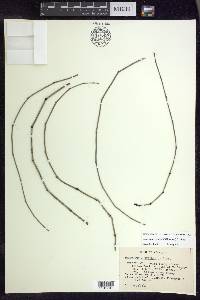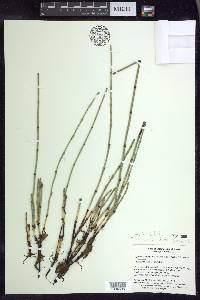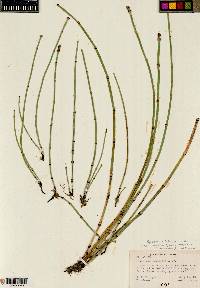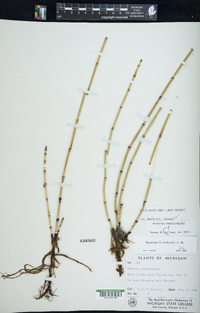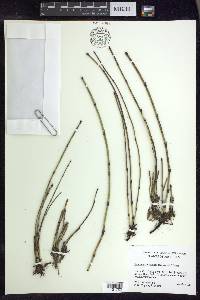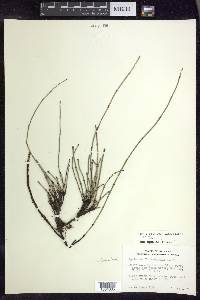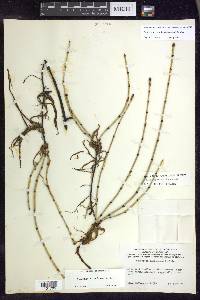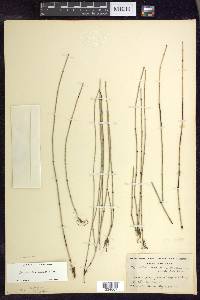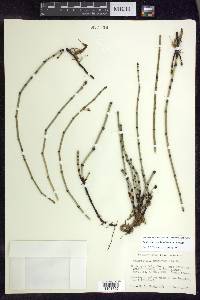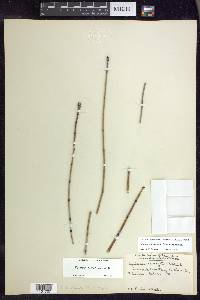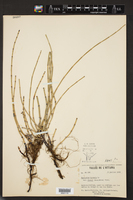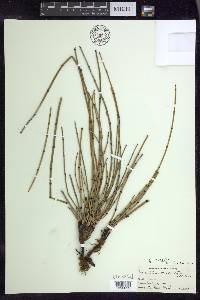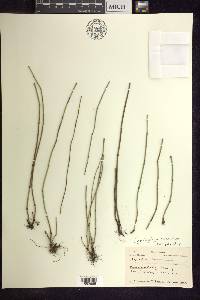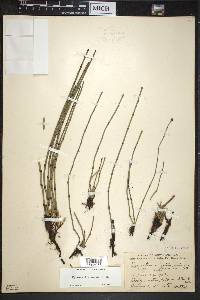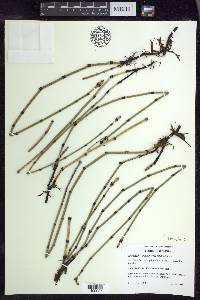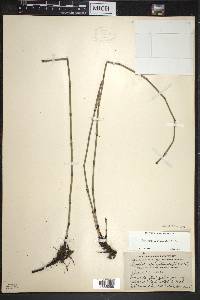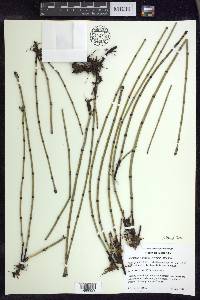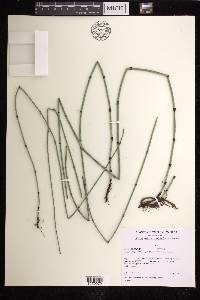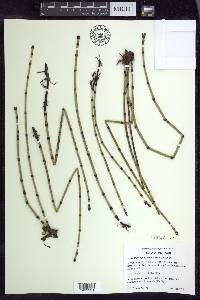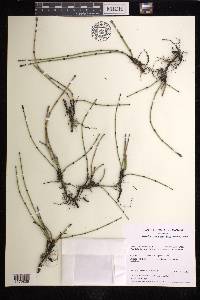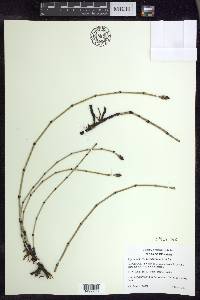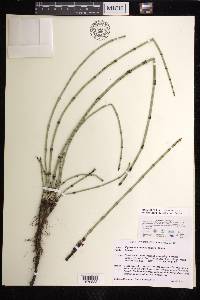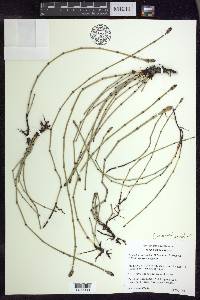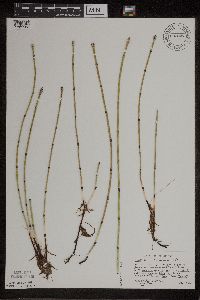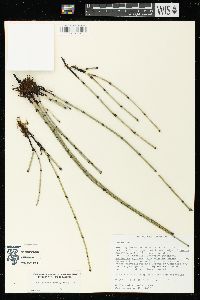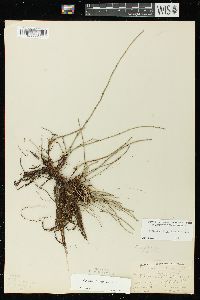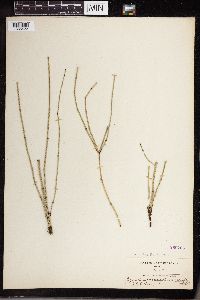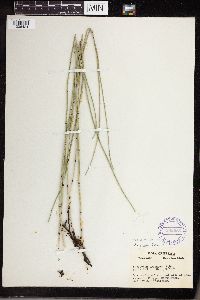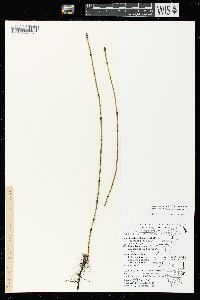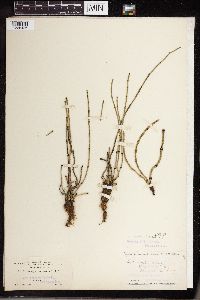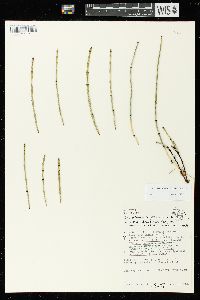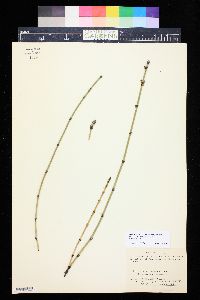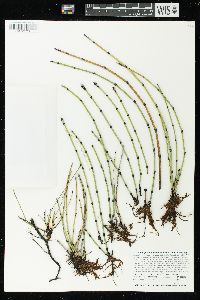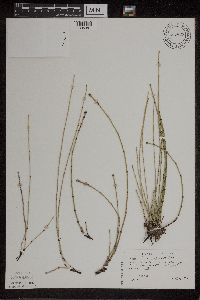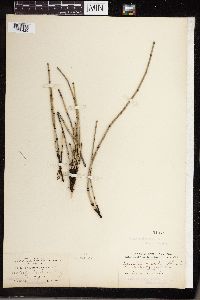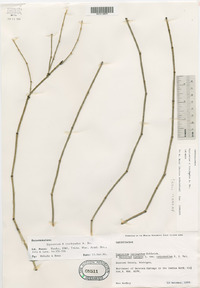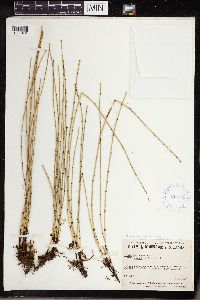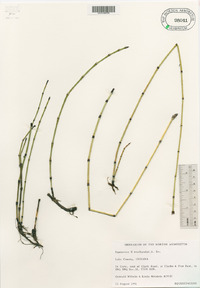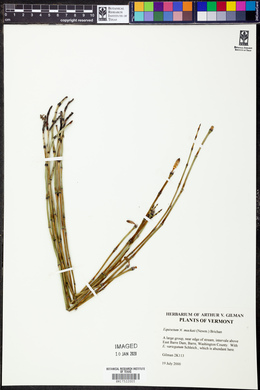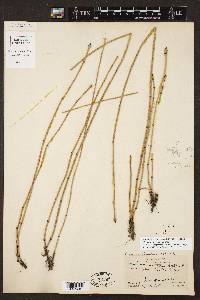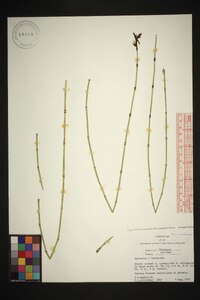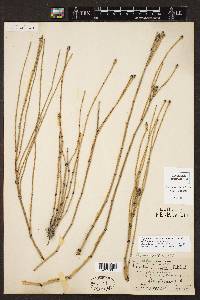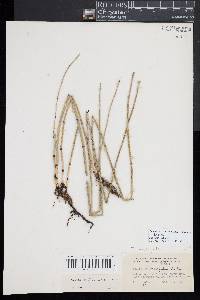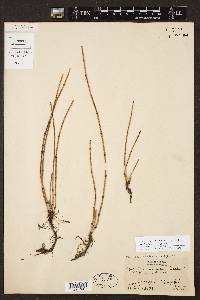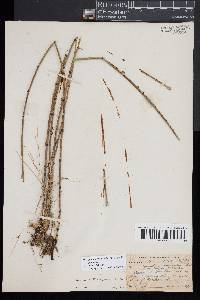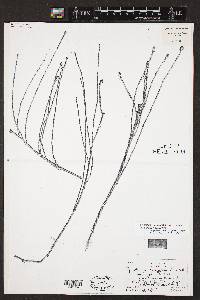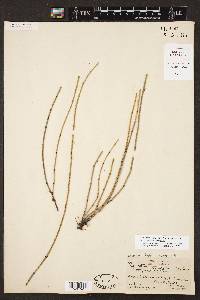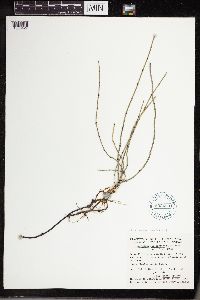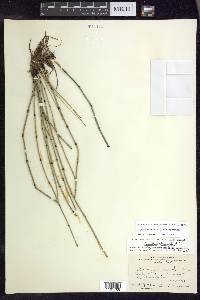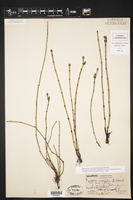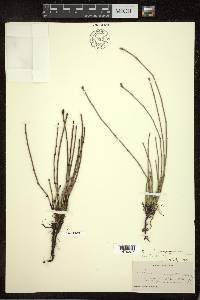Equisetum × mackayi
|
|
|
|
Family: Equisetaceae
Hybrid Horsetail
[Equisetum x mackaii (Newm.) Brichan [hyemale × variegatum], moreEquisetum x trachyodon , Equisetum × mackaii (Newman) Brichan] |
Aerial stems persisting more than a year, unbranched, 20--86 cm; lines of stomates single; ridges 7--16. Sheaths black or black-girdled and white distally, appressed, elongate, 3.5--8 × 2--5.5 mm; teeth 7--16, centers dark, margins white, prominent, not articulate, tip usually brown, long, filiform. Cone apex pointed; spores white, misshapen. Cones maturing in late summer, but misshapen spores not shed. Lakeshores, riverbanks, marshes; 0--500 m; Greenland; B.C., N.B., Nfld., Ont., Que., Sask.; Conn., Ill., Ind., Maine, Mich., Minn., Mont., N.H., N.J., N.Y., Ohio, Oreg., Vt., Wis.; n Europe. The hybrid between Equisetum hyemale and E . variegatum , E . × mackaii , is often mistaken for small forms of E . hyemale . I have not seen specimens for the reports from Connecticut and New Hampshire.
Perennial herbaceous fern ally 20 - 86 cm tall Spores: white, oddly misshapen, not spheric or rounded, and never released from spore sacs (sporangia). Stems: one to several, erect, straight, unbranched, green (usually persisting over winter), round with hollow center and seven to sixteen lengthwise rows of ridges with alternating valleys on outside. The stem joints have distinct nodes, and the stomates are sunken and arranged in single lines on each side of the stem valleys. Sheaths: black or with black band at base and white near top, 3.5 - 8 mm long, 2 - 5.5 mm wide, appressed, elongate, longer than wide in face view. The sheaths are actually small, fused, whorls of leaves. Sheath teeth: seven to sixteen, erect, appressed, persistent, with dark centers, obvious white edges, and usually brown, long, slender tips. Similar species: Equisetum x mackaii is most similar to its two parent species, E. hyemale ssp. affine and E. variegatum, but they both produce viable, round, spheric, green spores. Equisetum hyemale ssp. affine further differs by having more square stem sheaths in face view, many more teeth on the stem sheaths (up to 50), and the teeth are normally shed. The other parent, E. variegatum differs since the stem sheaths only have a black band at the top of the sheaths just below the teeth, and the plants tend to be a bit smaller. Another hybrid, E. x nelsonii, is quite similar but differs because the stem sheaths are green with the only dark areas around the teeth. Also similar is E. x ferrissii, but it differs because there are normally more than fourteen teeth on the stem sheaths, and the teeth are not persistent, but shed. Members of the other subgenus have clearly rounded cones on the unbranched fertile stems, the vegetative stems have branches, and the stomates are neither sunken nor arranged in distinct rows or lines. Habitat and ecology: Rare, localized only to moist calcareous areas near Lake Michigan such as pannes, interdunal swales, or seeps. Occurence in the Chicago region: native Notes: This plant commonly has the aboveground stems surviving for more than one year. Since the plant does not produce fertile spores, it can only reproduce vegetatively. Author: The Field Museum From Flora of Indiana (1940) by Charles C. Deam My only specimens are from Pokagon State Park from the wet, sandy shore of the east side of Lake James and from the east side of Crooked Lake, Noble County. ...... Indiana Coefficient of Conservatism: C = 10 Wetland Indicator Status: FACW |


